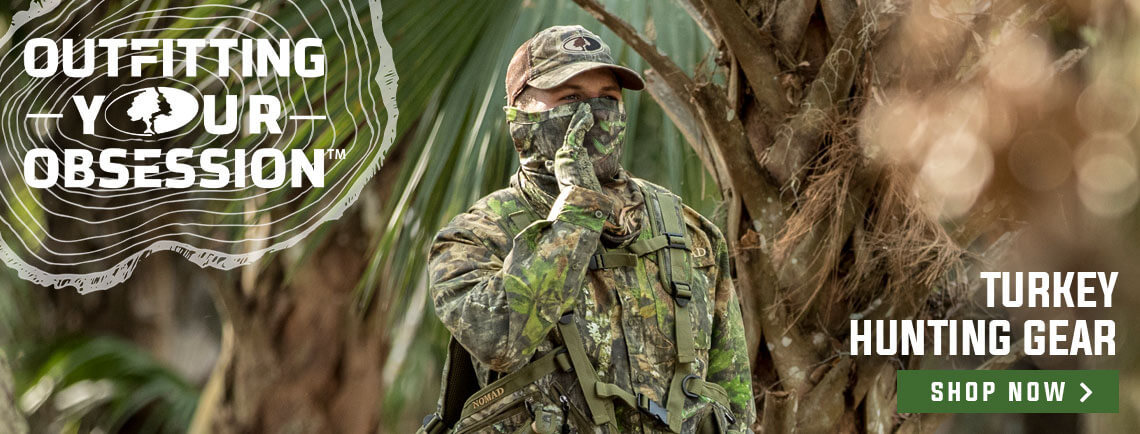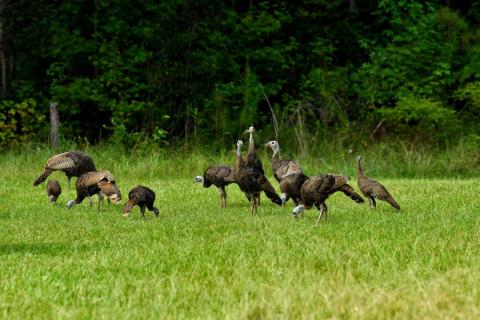Donald Devereaux Jarrett | Mossy Oak Pro Staff
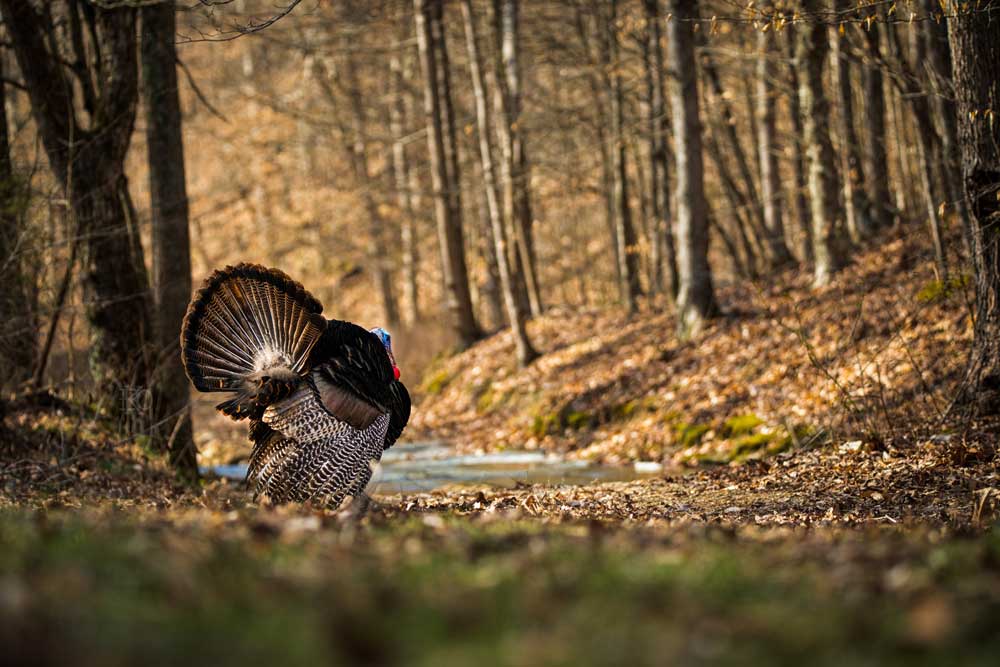
One day in a creek bottom, many springs ago, I was working a stubborn old bird on a wildlife management area in the central part of Georgia. He had gobbled plenty and had me believing that he was likely going to show up soon. I was a green turkey hunter at the time and was completely at the mercy of this bird, but I knew enough to not overdo it, so I kept telling myself to be patient and just let him come. Finally, he went quiet on me and again, being green in the turkey woods, I began to wonder if I was still in the game. Time drug on and after a good 45 minutes or so, I gave up on him and laid my gun across my lap. I was frazzled. My nerves were shot, and I was actually relieved that it was over.
I had plenty to learn at the time, but I had managed to kill a few birds, so I figured I was right on schedule. The tough part about that mindset was I was apt to end up learning more through trial and error than any other way. And so it was on that particular hunt. I remember hearing something in the woods that day that was new to me. I couldn’t figure it out at first but about the third time I heard it, I knew I was in trouble. I wasn’t all that familiar with the drum of a wild turkey, but I was starting to believe that was exactly what I was hearing. The bird suddenly strutted into view at 50 yards or so, and as he dragged his wings in the leaves, I heard the drum again. Each time he scooted forward, he drummed, and I was glad to be finally able to connect the sound with the source. The only problem I had now was the fact that my gun was still in my lap. It was a rookie mistake, and it cost me. I was never able to get my gun up and kill that bird. I could only watch as he strutted, and drummed, and eased back down into the creek bottom and out of sight.
Still, it was a victory of sorts. I had received an up-close and personal “classroom” lesson from the "Master" of the turkey woods on the drum of a wild turkey gobbler. It has been an invaluable piece of knowledge ever since and it has been the downfall of many a gobbler for me.
If you aren’t sure what the drum is, or even what it sounds like, I highly recommend that you look it up. You are more apt to hear it when a gobbler is strutting, and then he usually only does it as he moves in short bursts. It isn’t usually something he will do if he is just walking along strutting or if he is just standing still. When you watch a turkey strutting, and you see him take a few quick, sliding steps while he's doing it, listen for the drum. Eventually, one will be close enough for you to hear. It is a deep, baritone, guttural sound that starts deep and low in volume and increases as it goes. It is distinct and once you get a handle on it, you will be able to recognize it from then on. It is an unmistakable sound that you can almost feel. Most of the time it will start with a “tick” or “ffttt” sound, commonly referred to as the “spit.” Thus the term “Spit and Drum.” I love the gobble of a wild turkey, but the drum is right up there with it for me. I am fortunate in that it is a sound that I can hear extremely well.
Once you become familiar with it, it’s important to know that when you hear it, the gobbler is interested for sure and usually he is close or soon will be. Of course, wind, humidity, rain and so forth will affect your ability to hear it. He might not show up but there is a good chance he will. He might show up quick or it could take a while. Regardless, when you hear it, stay alert and expect him to show up.
After the gobble
Some gobblers will gobble off and on for a while, then go quiet and the next thing you know, you hear it; the spit and drum. Then, usually in a matter of a minute or two, he appears and sometimes he dies. When it happens like that, the drum is more of an icing on the cake. Almost unnoticeable at times. Some birds simply gobble, break and come in quickly. Even then, though, one drum can help you be sure of the direction the bird is approaching from and that can be the difference in getting a shot or not.
A good while back I had a bird gobble a handful of times before he shut it off. It was nothing new, even for me who was just a few years in. The difference was, I had learned, through trial and error, to hang in there a while. I had learned to give a bird a chance to get there. I had learned that a bird that goes quiet after gobbling can be a good thing. And I had learned what a drum was. Fifteen minutes after his last gobble, I heard the first drum. Had I not heard it, and been able to identify it, I likely would not have been in position to shoot when he showed up. Because of the drum, I was able to turn a good two feet to my right and was in good shape when the bird arrived. A couple of drums later, there he was. He died.
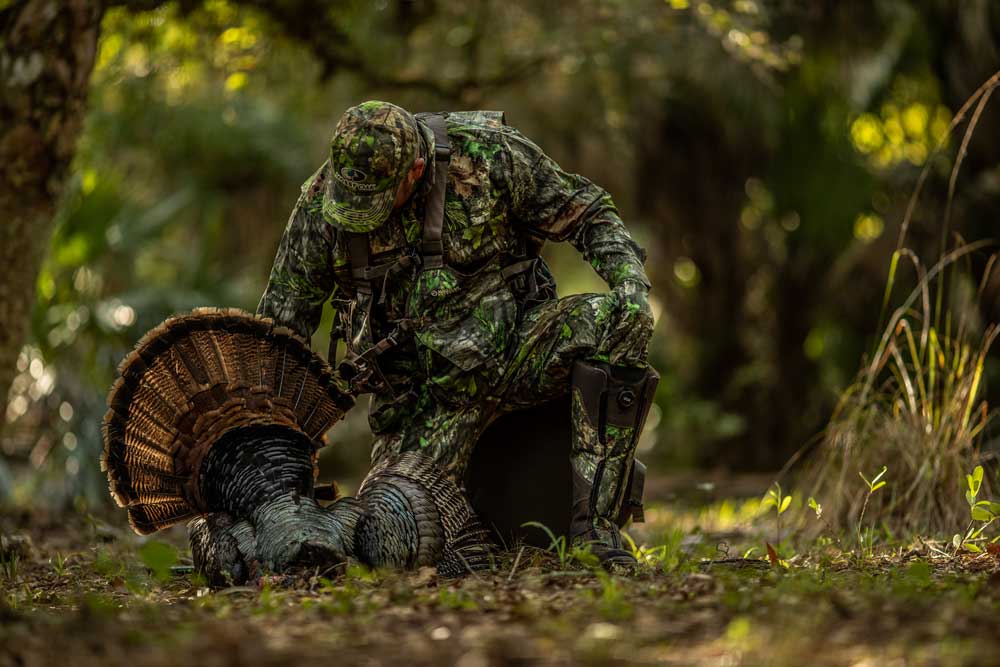
The Pause
Sometimes gobblers will gobble plenty and then seem to disappear. Sometimes they might gobble very little and leave you guessing. It took me a while, when I was still new to it all, to understand that a silent bird doesn’t necessarily mean that he has gone on to different parts. I mentioned earlier the hunt where I learned what a drum sounded like. It was before Google; I didn’t have the luxury of looking it up to see what it was and what it sounded like. So, I learned about it the only way I could; live and in color. Then, I knew it. Knowing what that sound is consistently pays off every year for me. This past spring, while on a hunt with good friend, Jonathan Barber in South Georgia, was a profound example how the drum can be a huge advantage.
Jonathan and I had covered a lot of ground our first evening in camp. It was pretty warm but not unbearable and the sandy, South Georgia roads were covered with turkey sign. We had seen a hen or two along the way as we worked our way to an old unplanted food plot deep into the woods. When we got to within 150 yards of the opening, I called, and Jonathan said he thought he heard one gobble. I could only take his word for it as I didn’t hear it. He said the bird sounded a good bit past the old plot so we decided to move to the plot and set up a while and see if we could work the bird in. It was a pretty spot with huge Live Oaks and some good, welcome shade. There were dust bowls around the edge, and it just had that old familiar, evening loafing spot look of a big old gobbler. If you’ve seen them, you know the kind of spot I’m talking about. We picked out one of the big oaks and set up to work the bird.
We settled in and I gave a few yelps. No response didn’t exactly fill us up with enthusiasm, but we were where we were going to be until dark and we were prepared to hang tight. A while later a few hens made their way into the edge of the plot. Still no gobbler, though. When they eased out of the plot after a few minutes and eased back into the woods, I called again. Within minutes of my last call, I told Jonathan that I was hearing a drum. I could hear it off to my right but could not see him. This continued for a while, but the bird would not break. More hens made their way in, but the bird remained out of sight in the pines to my right. Another ten minutes passed, and the drumming started to fade as the gobbler began to ease off. I felt like we were losing him and when the hens eased deeper into the woods to our left, I swapped calls and gave a few soft yelps on an old scratch box. Seconds later the drumming returned, and he was closer than he had been to this point. I was soon able to see him, way right and behind me. He kept walking further behind me and eventually, about 100 yards away, Jonathan spotted the bird as he stepped into the roadbed that led into the opening. I called again and he broke and trotted in. I shot him at 22 yards as he entered the old food plot.
I’ve been turkey hunting a long time, but I’d rank this bird in the top 5 in drumming that I have ever killed. He was an old stud and, had it not been for all that drumming, he would have lived another day. Never give up on a quiet bird and listen for that drum!
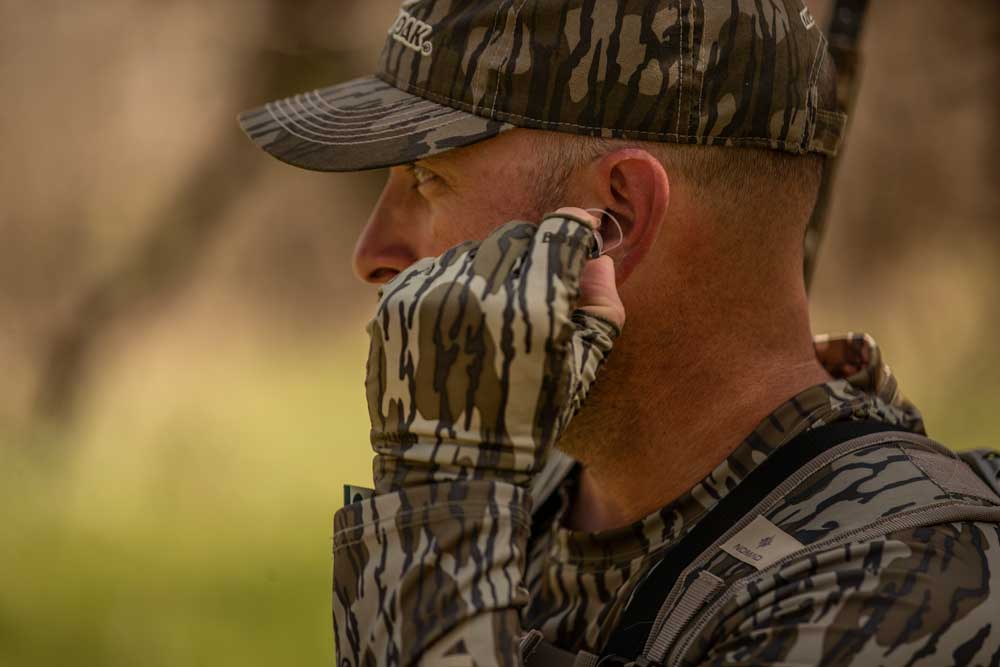
Just Plain Drum
There will be times when you will run up on a bird that doesn’t gobble. It happens more than we could ever know. Think about that for a minute. How many times do we walk and call or sit in a spot for hours and never hear a bird? I know I have been saved by the drum time and time again. I can’t count the times I have thought there wasn’t a bird within 10 miles of me, only to have one give himself away with a drum. Sometimes you might only hear the spit, sometimes just the drum. Sometimes both. You just can’t afford to ever let yourself get into a state of mind where you think turkeys aren’t close by. I have pretty much trained myself to listen for the drum at all times after I have made a call.
I had a client not long ago that I was struggling to get a bird in front of. I couldn’t buy one and after a couple of days of some seriously hard hunting, I decided to just go to an area I believed in and set up a while. We had put the effort in and covered a lot of ground. My client was worn out, and I was too, and usually on the last day of the hunt I would run till the sun went down if my client had not scored.
This day was different though. The birds had been in a bit of a lull, and I began to believe that we had as good a chance setting up in a usually productive spot as we did running all over the place trying to find a volunteer. So, the wait began. I started things off with a few basic yelps and decided to keep the calling low key and sporadic. I could tell my client was feeling the pressure. I was too but I still believed it was going to happen.
It was late morning and we had committed to hunting straight through until dark if need be. Two and a half hours in, I was toying with the idea of moving to another location, but I fought the urge for a few more minutes. It turned out to be a good decision too as I soon heard a spit and drum. I quickly grabbed the arm of my client and told him, “Get your gun up!” as I pointed him in the right direction. He wasn’t sure what was going on, but he trusted me. Less than 20 seconds later a beautiful longbeard was flopping at 30 yards. Man, you talk about a celebration!
“How did you know?” he asked. I told him that I heard him drum. He had no idea what I was talking about. I’m glad I knew. This bird was just doing what gobblers do. They don’t always gobble. They don’t always spit and drum either, but when they do, if you can hear it, it’s a dead giveaway.
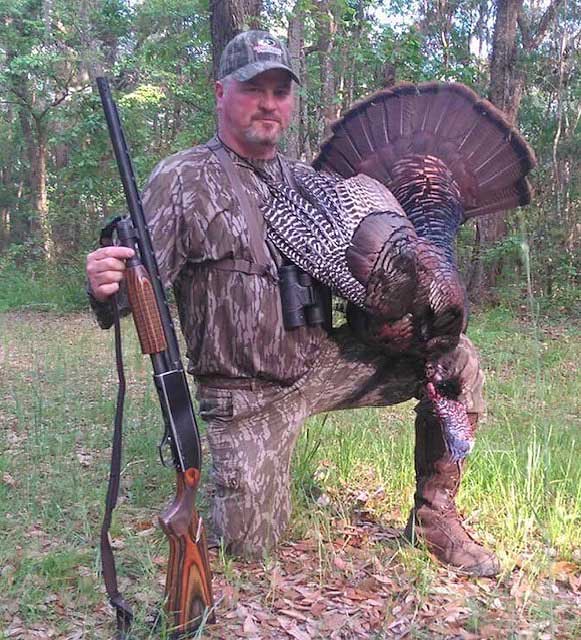
Drum before You Know
There is another drum scenario that comes to mind. It is the drum we hear before we are even aware that there is a gobbler in the neighborhood. It is a rare occurrence, mainly because we have conditioned ourselves to go about our business in the turkey woods listening for a gobble or a mouthy hen. We likely don’t pay enough attention to the other turkey sounds that could help us put more birds in range. Sounds like scratching in the leaves, soft clucks, purrs, the spit and drum.
READ NEXT: Turkey Sounds: How & When to Use Them
I recall an early afternoon while hunting a creek bottom in Nebraska with good friends Mike Moody and Nathan Mason. The birds were in a lull after an unbelievable morning. I had killed a bird at daylight and another one a couple hours later. Now we were trying to get something in front of Nathan. We were easing along the creek and had headed into a stretch of hardwoods when I heard it. “Whoa, Whoa, Whoa!” I whispered loudly. Mike and Nathan had hunted with me enough to know, when I say I hear drumming, there’s a good chance it’s legit. We quickly backed out and found a clearing to set up on facing the direction the birds were in. When we set up 20 yards or so behind Nathan, I started calling. It only took about 10 minutes, but the drumming grew louder and then they were there. Nathan shot two of the four gobblers that showed up and the drum was responsible again.
The spit and drum is as synonymous with turkey hunting as the gobble or the yelp. It is valuable beyond measure. Make it a point to learn what it sounds like if you don’t know already. Listen for it in every set up and as you move about in the turkey woods. When you are approaching spots that you know gobblers like to frequent, loafing areas, strut zones, etc., treat the situation as if there is a bird already there and take your time. If he’s there, he could be strutting for hens and if he is you just might be able to hear him if you will just listen for the beat of a different drum.

